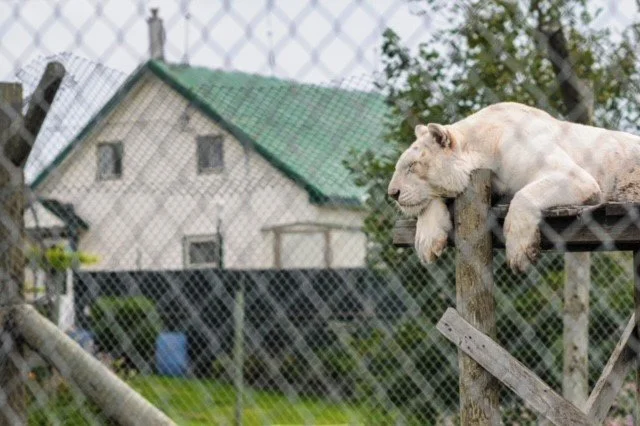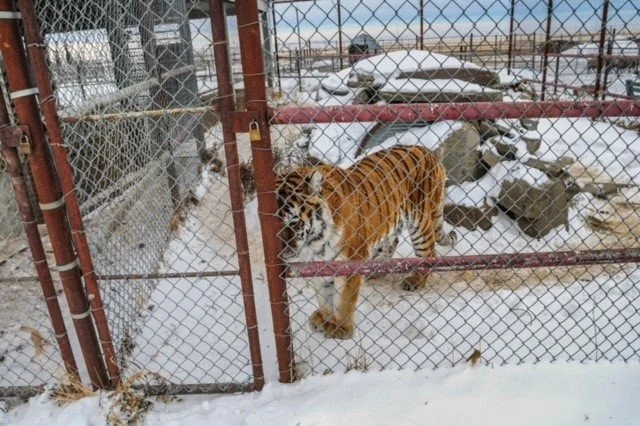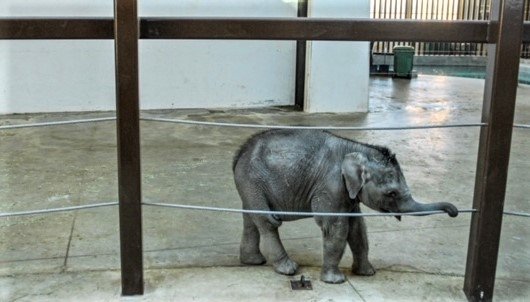By Jessica Scott-Reid
Jessica is a Canadian writer, animal advocate and plant-based food expert. Her work appears regularly in media across Canada and the US.
This is Part 2 of a two-part blog on the answers to the problems with zoos. (Read Part 1)
Research shows that just over half of Canadians are no longer in favour of holding animals in zoos. Questions around animal welfare and the ethics of keeping animals captive for entertainment, education and conservation, are increasingly being asked.
At the recent Canadian Animal Law Conference, a panel of experts took on the issue of zoos, discussing both concerns, as well as proposed solutions, including the Jane Goodall Act. While the proposed Act is largely considered a step in the right direction, some experts, including associate professor of philosophy Andrew Fenton, retired law professor Vaughn Black, both from Dalhousie University, and Animal Justice executive director Camille Labchuk, think more could be done.
Bill S-241, the Jane Goodall Act, was re-introduced last March by Senator Marty Klyne, after first being introduced in 2020. The initial bill sought to increase animal welfare standards for the 33 great apes, nine chimpanzees, over 20 elephants, 18 gorillas and six orangutans, currently living in captivity in Canada, according to the Toronto Humane Society. The updated Act takes this even further, providing new legal protections for big cats, bears, wolves, walruses, seals, sea lions, certain monkeys, as well as some reptiles such as crocodiles and giant pythons at roadside zoos.
Commenting on the Act, Dr. Goodall world-renowned conservationist said, “So many [animals] are in desperate need of our help and the Jane Goodall Act establishes protection and support for animals under human care. It is a monumental step forward for animals, people, and the environment. I am honoured to lend my name to this world-leading legislation that is supported by a wonderful coalition of government, conservationists, animal welfare groups and accredited zoos. Together we can and will provide a voice for those who cannot speak for themselves and put an end to the misery that is wildlife trafficking."
Tiger in a small enclosure at a roadside zoo in Canada. Photo: Jo-Anne McArthur/ZOOCHECK/We Animals Media
Perhaps the most impactful parts of the Act include a ban on the use of all stated animals for performance, and a ban on any new captivity of stated animals, unless licensed for their best interests. It also states that “science, empathy, and justice require everyone to respect the biological and ecological characteristics and needs of animals.” Black says having a notable number of references to the animals’ best interests, animal welfare and living their best life included in the Act is “encouraging terminology.”
Fenton, however, expresses concern about who gets to decide whether or not an animal is living a good life. Welfare scientists and animal advocates, he explains, typically measure these things differently. A good life, he asserts, often goes beyond the standards set by welfare scientists.
Baby elephant at a major zoo in Canada. Photo: Jo-Anne McArthur/ZOOCHECK/We Animals Media
Black also adds that the Act does not grant animal advocates any legal standing, meaning they have no ability to bring legal proceedings.
Further shortcomings, Black says, include the grandfather clause, meaning that designated animals currently in captivity would be able to remain there; as well as the licensing caveat that would make it a criminal offence to hold new designated animals captive, however simply getting a licence could allow it.
Ultimately, Black says that bringing in federal regulations and licensing of zoos in Canada is a good idea, stating that it has been left to the provinces for too long “and they aren’t doing a good job.”
Labchuk of Animal Justice agrees. In an interview with PFN following the panel, she says the Jane Goodall Act “is a huge step towards ending captivity for big cats, bears, many monkeys, wolves, sea lions, walruses, and dangerous reptiles like crocodiles and snakes.” She calls this “important, because exotic animal ownership and zoo laws across Canada are insufficient."
Frozen tigers found in a freezer during an SPCA inspection at a roadside zoo in Canada. Photo: We Animals Media
She points to Ontario as an example, which she explains, "doesn't even licence or regulate zoos, allowing cruelty to flourish at roadside zoos.” Nevertheless, Labchuk does hope the Act will be further strengthened “to consider the well-being of each individual animal and remove exemptions that zoos may be able to use to get around laws against captivity and breeding.”
Because, Labchuk adds, ending animal captivity as we know it today, can’t be done with a snap of the fingers. “There are countless exotic and wild animals held in private homes and zoos, and they can't be returned to the wild because they do not have communities or survival skills,” she explains. “In the short-term, there will be a need to find sanctuaries for animals rescued from the zoo and pet trade.”
Labchuk calls on zoos to transition away from a captive display model, “toward a wildlife sanctuary model, where they can help provide shelter for animals in need while prioritizing the well-being of the animals instead of profit.”
Sign up below for our newsletter — delivered to your inbox every month — to share insightful stories on how to have a positive impact on life on our planet.




